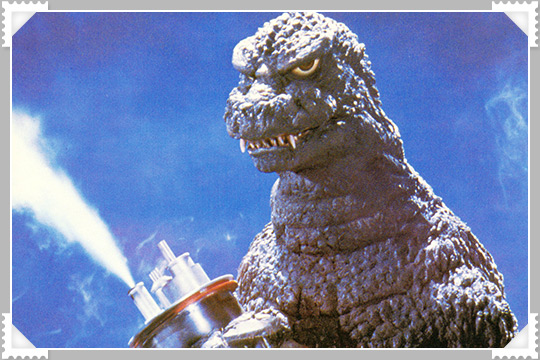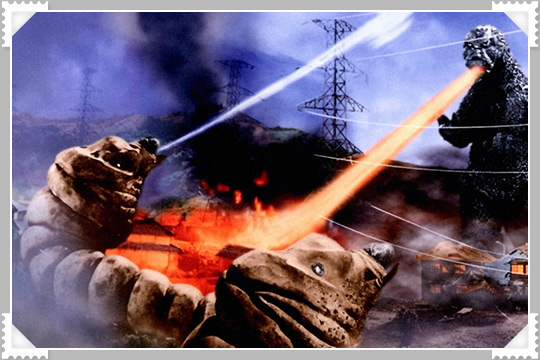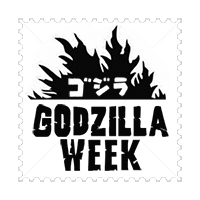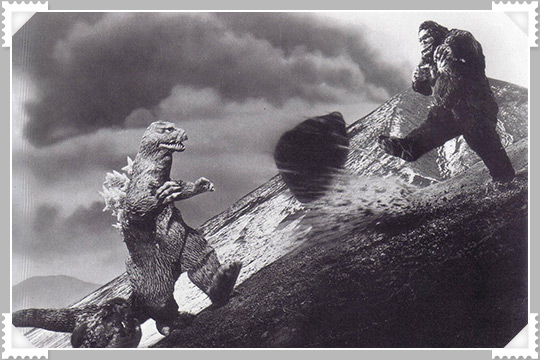Dear Takuya Yamabe, Suit Builder,
 We get nearly an hour into Godzilla, Mothra and King Ghidorah: Giant Monsters All-Out Attack (in the interest of avoiding eyestrain, I’ll be using the abbreviation GMK from here on out) before we get to see your handiwork tearing up the screen, but, boy oh boy, is it ever worth the wait. For a script heavily steeped in mysticism and Japanese folklore, you designed a Godzilla unlike any we’ve seen before. Gone are the nuclear age allegories, the superheroic antics – everything familiar – and in their place a merciless, supernatural tale of vengeance. Thanks to your hard work, the big guy comes off as genuinely scary for the first time in years.
We get nearly an hour into Godzilla, Mothra and King Ghidorah: Giant Monsters All-Out Attack (in the interest of avoiding eyestrain, I’ll be using the abbreviation GMK from here on out) before we get to see your handiwork tearing up the screen, but, boy oh boy, is it ever worth the wait. For a script heavily steeped in mysticism and Japanese folklore, you designed a Godzilla unlike any we’ve seen before. Gone are the nuclear age allegories, the superheroic antics – everything familiar – and in their place a merciless, supernatural tale of vengeance. Thanks to your hard work, the big guy comes off as genuinely scary for the first time in years.
In a rather ballsy (and still hotly debated to this day) ret-conning of Godzilla’s backstory, we find out that he is, in fact, the embodiment of countless souls who were the victims of atrocities perpetrated during the Second World War, now seeking to make Japan pay for its sins. To this point, an element of the suit that could have come off as hokey (perhaps you even said so when you first saw the concept art) works wonderfully: the pupilless, cloudy eyes. It’s an unsettling effect. Godzilla feels like something old and long dead whose very existence should be impossible.
What works best is how emotive the head is. It’s all subtle movements, eyes narrowing and lips curling back, but it works wonders in establishing personality. Seeing the face of my childhood hero twist into a snarl of contempt during a battle was chilling the first time I saw it. Frankly, I have no idea why it took the effects teams decades to figure out something so simple and effective.
There’s a freshness to GMK that avoids the usual “Monster A appears, wrecks stuff, Godzilla shows up, battles Monster A, wins”-structure that was prevalent in the previous entries. Not that I really mind, to be fair; since this movie proposes that Godzilla hasn’t been seen or heard from since the events of the 1954 original, we now have an entirely new generation of fleeing, screaming ants who have no idea who Godzilla is or what he even looks like. This leads to some nice little moments of confusion when ‘Guardian Monsters’ – beasts prophesized to protect the homeland against any threat – begin to appear and are immediately mistaken for Godzilla. This build-up to the grand reveal of your lovingly-crafted costume is made all the more dramatic, leading into a sequence showcasing the grim reality of a massive creature in the middle of a highly-populated area.
The only real issue I have – and this has little to do with your involvement – is that the climatic monster fight feels a little weak, mostly due to the somewhat perplexing decision to have one of the Guardians slaughtered, get revived, only to receive another knockout punch almost immediately afterwards. It’s a real tension killer.
This may not be the Godzilla I grew up with – and, honestly, it’s not one I am eager to see again – but as a one-and-done experiment that tries something a little different, it’s pretty much perfect.
Yours,
Kelan
Status: Air Mail (4/5)




